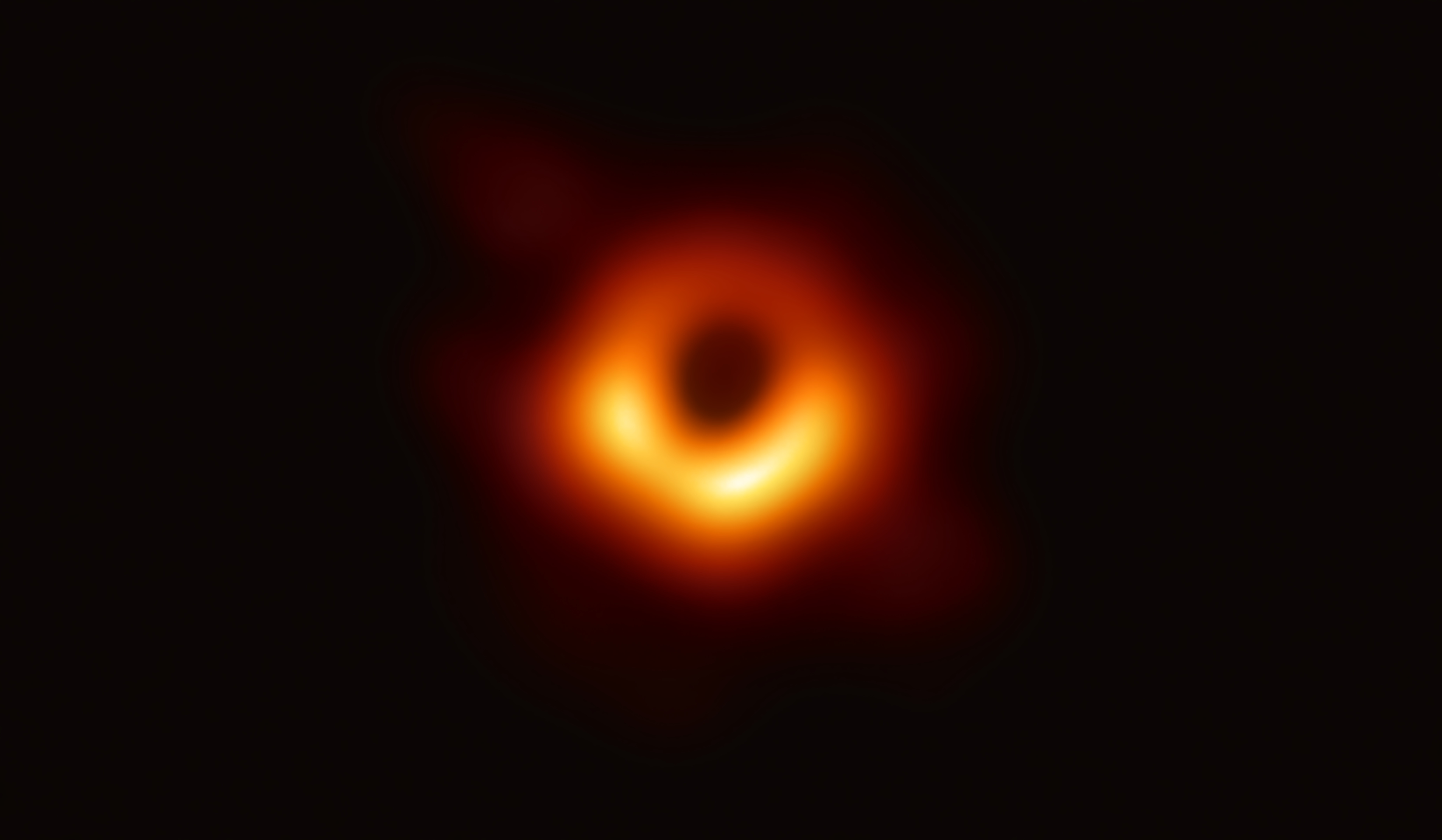

The Event Horizon Telescope (EHT) — a planet-scale array of eight ground-based radio telescopes forged through international collaboration — was designed to capture images of a black hole. In coordinated press conferences across the globe, EHT researchers revealed that they succeeded, unveiling the first direct visual evidence of the supermassive black hole in the centre of Messier 87 and its shadow. The shadow of a black hole seen here is the closest we can come to an image of the black hole itself, a completely dark object from which light cannot escape. The black hole’s boundary — the event horizon from which the EHT takes its name — is around 2.5 times smaller than the shadow it casts and measures just under 40 billion km across. While this may sound large, this ring is only about 40 microarcseconds across — equivalent to measuring the length of a credit card on the surface of the Moon. Although the telescopes making up the EHT are not physically connected, they are able to synchronize their recorded data with atomic clocks — hydrogen masers — which precisely time their observations. These observations were collected at a wavelength of 1.3 mm during a 2017 global campaign. Each telescope of the EHT produced enormous amounts of data – roughly 350 terabytes per day – which was stored on high-performance helium-filled hard drives. These data were flown to highly specialised supercomputers — known as correlators — at the Max Planck Institute for Radio Astronomy and MIT Haystack Observatory to be combined. They were then painstakingly converted into an image using novel computational tools developed by the collaboration. Credit: Event Horizon Telescope Collaboration
The event horizon of a black hole is the boundary (‘horizon’) between its ‘outside’ and its ‘inside’; those outside cannot know anything about things (‘events’) which happen inside.
What an event horizon is – its behavior – is described by applying the equations of Einstein’s theory of General Relativity (GR); as of today, the theoretical predictions concerning event horizons can be tested in only very limited ways. Why? Because we don’t have any black holes we can study up close and personal (so to speak) … which is perhaps a very good thing!
If the black hole is not rotating, its event horizon has the shape of a sphere; it’s like a 2D surface over a 3D ball. Except, not quite; GR is a theory about spacetime, and contains many counter-intuitive aspects. For example, if you fall freely into a black hole (one sufficiently massive that tidal forces don’t rip you to pieces and smear you into a plastic-wrap thin layer of goo, a supermassive black hole for example), you won’t notice a thing as you pass through the event horizon … and that’s because it’s not the event horizon to you! In other words, the location of the event horizon of a black hole depends upon who is doing the observing (that word ‘relativity’ really does some heavy lifting, if you’ll excuse the pun), and as you fall (freely) into a black hole, the event horizon is always ahead of you.
You’ll often read that the event horizon is where the escape velocity is c, the speed of light; that’s a not-too-bad description, but it’s better to say that the path of any ray of light, inside the event horizon, can never make it beyond that horizon.
If you watch – from afar! – something fall into a black hole, you’ll see that it gets closer and closer, and light from it gets redder and redder (increasingly redshifted), but it never actually reaches the event horizon. And that’s the closest we’ve come to testing the theoretical predictions of event horizons; we see stuff – mass ripped from the normal star in a binary, say – heading down into its massive companion, but we never see any sign of it hitting anything (like a solid surface). In the next decade or so it might be possible to study event horizons much more closely, by imaging SgrA* (the supermassive black hole – SMBH – at the center of our galaxy), or the SMBH in M87, with extremely high resolution.
The Universe Today article Black Hole Event Horizon Measured is about just this kind of black hole-normal star binary, Black Hole Flares as it Gobbles Matter is about observations of matter falling into a SMBH, and Maximizing Survival Time Inside the Event Horizon of a Black Hole describes some of the weird things about event horizons.
There’s more on event horizons in the Astronomy Cast Relativity, Relativity and More Relativity episode, and the Black Hole Surfaces one.
Sources: NASA Science, NASA Imagine the Universe
NASA continues to progress with the development of the Nancy Grace Roman Space Telescope (RST),…
Our neighbour, the Large Magellanic Cloud (LMC), is rich in gas and dust and hosts…
New research on locomotion techniques that could be used in space exploration is constantly coming…
White dwarfs are the remnants of once brilliant main sequence stars like our Sun. They're…
We all know that asteroids are out there, that some of them come dangerously close…
It’s a familiar sight to see astronauts on board ISS on exercise equipment to minimise…